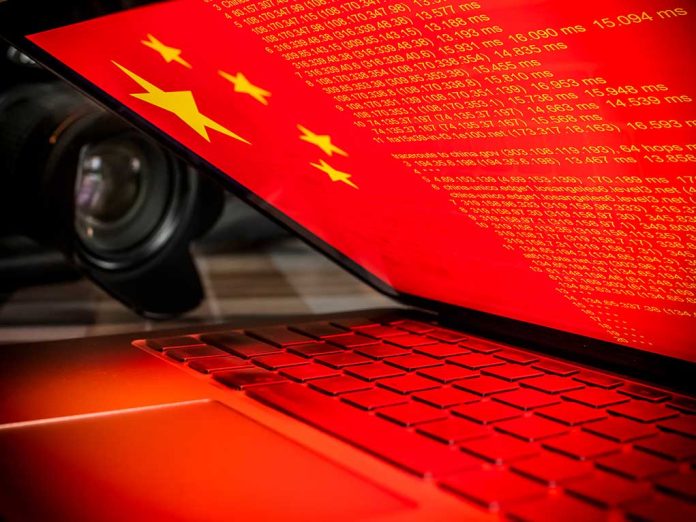
President Trump secures rare earth minerals essential for national defense in landmark China trade deal, outmaneuvering Beijing with 55% US tariffs compared to China’s 10%.
Key Takeaways
- President Trump has secured a “done” trade deal with China that includes full access to critical rare earth minerals and magnets essential for US military production.
- The deal maintains asymmetrical tariffs – 55% on Chinese goods versus 10% on American exports – heavily favoring the United States.
- China will supply rare earth minerals “up front” – a major concession as China controls 60% of global production and 90% of processing.
- The agreement reverses course on Chinese student visas, allowing continued access to American universities.
- Some business leaders express concern about the high 55% tariff’s impact on consumer prices and supply chains.
Trump Secures Vital Military Resources from China
President Donald Trump announced a significant breakthrough in US-China trade relations on June 11, 2025, with a deal securing access to rare earth minerals critical for American military production. The agreement, announced through Truth Social, represents a major victory for US national security interests as China has historically leveraged its dominance in rare earth production during trade disputes. These materials are essential components in F-35 fighter jets, nuclear submarines, missiles, radar systems, and smart bombs that form the backbone of American defense capabilities.
The agreement comes at a crucial time for US military readiness. China currently controls approximately 60% of global rare earth production and processes about 90% of these materials worldwide. The deal specifically mentions “full magnets and any necessary rare earths” to be supplied “up front” by China, addressing a critical vulnerability in American defense manufacturing capabilities that previous administrations failed to resolve.
China sets a six-month limit on rare-earth export licenses to U.S. manufacturers. In exchange, U.S. negotiators relaxed restrictions on jet engines and ethane. This temporary deal reflects the strategic leverage Beijing holds in the trade dispute.https://t.co/VvlJ9yQlHS
China…— Spotlight on China (@spotlightoncn) June 12, 2025
America-First Trade Terms
The agreement establishes a decidedly America-first tariff structure, with President Trump securing a 55% tariff on Chinese imports while limiting China’s retaliatory tariffs to just 10%. “WE ARE GETTING A TOTAL OF 55% TARIFFS, CHINA IS GETTING 10%. RELATIONSHIP IS EXCELLENT! THANK YOU FOR YOUR ATTENTION TO THIS MATTER!” Trump announced via Truth Social. This asymmetrical arrangement reflects Trump’s continued commitment to reversing decades of trade imbalances that have favored China at the expense of American workers and industries.
“This trade deal is a win for the United States, demonstrating President Trump’s unparalleled expertise in securing deals that benefit the American people,” said President Donald J. Trump.
Commerce Secretary Howard Lutnick confirmed the agreement, stating, “We have reached a framework to implement the Geneva consensus and the call between the two presidents.” The deal builds upon what Trump’s administration refers to as the “Geneva consensus,” demonstrating the President’s continued commitment to rebuilding America’s economic leverage on the world stage. Chinese negotiator Li Chenggang has agreed in principle, though final approval is still pending between Presidents Trump and Xi.
Education Access Maintained
In a notable shift from earlier positions, President Trump confirmed that Chinese students will continue to have access to American colleges and universities as part of the agreement. “WE WILL PROVIDE TO CHINA WHAT WAS AGREED TO, INCLUDING CHINESE STUDENTS USING OUR COLLEGES AND UNIVERSITIES (WHICH HAS ALWAYS BEEN GOOD WITH ME!)” Trump stated in his Truth Social announcement. This represents a strategic calculation balancing security concerns with the significant revenue Chinese students bring to American educational institutions.
“Unlike previous administrations, President Trump took a tough, uncompromising stance on China to protect American interests and stop unfair trade practices,” said President Donald J. Trump.
The agreement also establishes mechanisms for ongoing trade and economic discussions between the two countries, while maintaining strong protections for American interests. Both nations have committed to combating the flow of fentanyl and other precursors to North America, addressing a critical national security and public health concern. This comprehensive approach demonstrates Trump’s ability to secure America’s strategic interests while maintaining diplomatic channels with global competitors.
Business Impact and Ongoing Challenges
Despite the clear national security wins, some business leaders have expressed concerns about the impact of 55% tariffs on consumer goods and supply chains. “A 55% tariff from China will substantially cause instability for consumer goods companies that are bringing goods in from China,” noted Bruce Kaminstein. Walmart CEO Doug McMillon has indicated that price increases are likely, stating: “Given the magnitude of the tariffs, even at the reduced levels announced this week, we aren’t able to absorb all the pressure given the reality of narrow retail margins.”
“Even before the latest restrictions, the US defense industrial base struggled with limited capacity and could not scale up production to meet defense technology demands. Further bans on critical minerals inputs will only widen the gap, enabling China to strengthen its military capabilities more quickly than the United States,” said Gracelin Baskaran.
Analysts expect further negotiations and potential industry-specific exemptions as the implementation details are finalized. What remains clear, however, is that President Trump has secured a landmark agreement that prioritizes America’s military readiness and manufacturing capabilities, while imposing tariffs that significantly favor American economic interests – precisely the America-first approach that voters endorsed in returning him to office.







